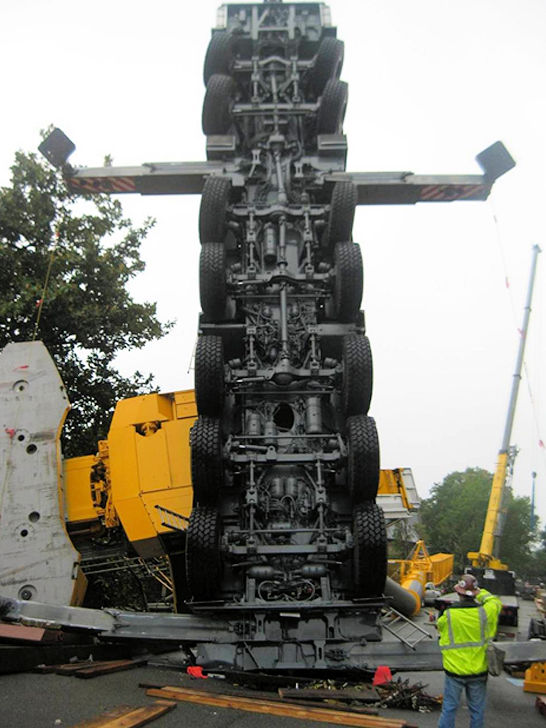Operation
OSHA 1926.1417 contains a number of requirements that are designed to prevent dangerous conditions during crane operations.
Compliance with Rated Capacity
One of the most serious hazards that cranes present is collapse of the equipment caused by exceeding the crane's rated capacity.
The term "rated capacity" is defined in section 1401, and that definition reads:
Rated capacity means the maximum working load permitted by the manufacturer under specified working conditions. Such working conditions typically include a specific combination of factors such as equipment configuration, radii, boom length, and other parameters of use.
The combination of factors that enter into rated capacity is set forth in a load chart that must be on the equipment. In general, the load chart states the weight of the load that the crane can lift at different boom radii. The longer the radius at which the lift occurs, the smaller amount of weight the crane can lift.
You must not operate a crane in excess of its rated capacity. Some crane users believe they can safely exceed the rated capacity because the manufacturer includes a safety factor in the load chart. However, any safety factor included by the manufacturer is not intended to be treated as excess capacity. It is included because a variety of variable worksite conditions, such as swinging of the load caused by wind or other factors, can reduce the capacity of the crane from that which exists under ideal conditions.
To comply with the rated capacity, the weight of the load must be known. Before beginning a lift, you must determine the load weight by using a reliable means.
Knowledge Check Choose the best answer for the question.
1-1. The maximum working load permitted by the manufacturer under specified working conditions is defined as a crane's _____.
You forgot to answer the question!

